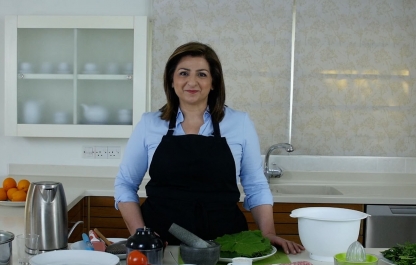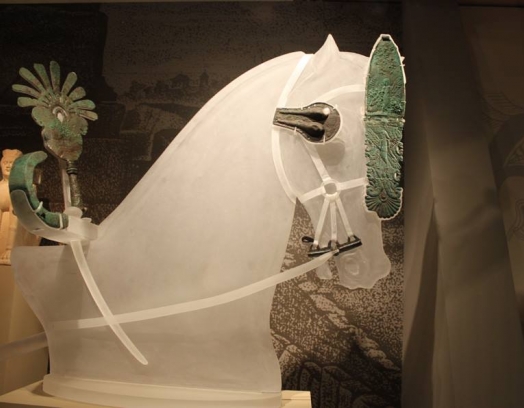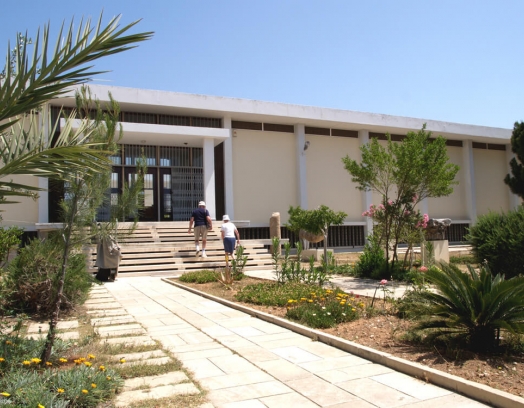Today we will launch a new column, dedicated to the traditions and secrets of authentic Cypriot cuisine. Here you will gain firsthand knowledge and try cooking something for your friends and family using our video guide with step-by-step instructions.
Marilena Joannides — a famous culinary expert in Cyprus — will assist us in the process.
Many people start to wonder what food to prepare for the Easter holidays. It is no accident that our first story will be dedicated to Easter and traditional holiday baking. You might already know that Orthodox Easter is a very important holiday in Cyprus. Christian families take a lot of effort to prepare for it. Here, you can learn more about Easter traditions on the island.
Cyprus has a long history of baking traditions, especially when it comes to holiday food. The secrets and recipes of Cypriot cooking are passed down from generation to generation.
Marilena has invited us into her kitchen in order to share the secret of preparing the perfect Easter bread, known as koulouri. Koulouri is also sometimes called «village sesame bread», thanks to the abundance of sesame seeds.
This bread is actually part of a number of other cultures. For example, koulouri is also popular among the people of Greece and Turkey (where it is called «simit»). Koulouri can be soft or hard (in which case the freshly baked bread is first allowed to cool down and is then send back into the oven) and is usually circular. You can purchase it at any bakery in most Mediterranean countries.
However, in Cyprus Easter koulouri is rather small, crispy on the outside and soft on the inside, sweet-smelling bread. Freshly baked koulouri is an amazing treat that practically melts in your mouth!
Today we will tell you how to make it using a recipe that originates in the Karpasia Peninsula.
Since the recipe includes milk, cheese and butter, it is no surprise that the bread is served following the end of Great Lent.
It is time to let Marilena Joannides take over from here! She will tell you about the way this bread was baked in Rizokarpaso — the home village of her grandmother, who taught Marilena the secrets of traditional Cypriot cuisine.
To watch with subtitles please press CC button
Recipes
«Karpasitika Koulouri» Easter bread
Traditional holiday baking
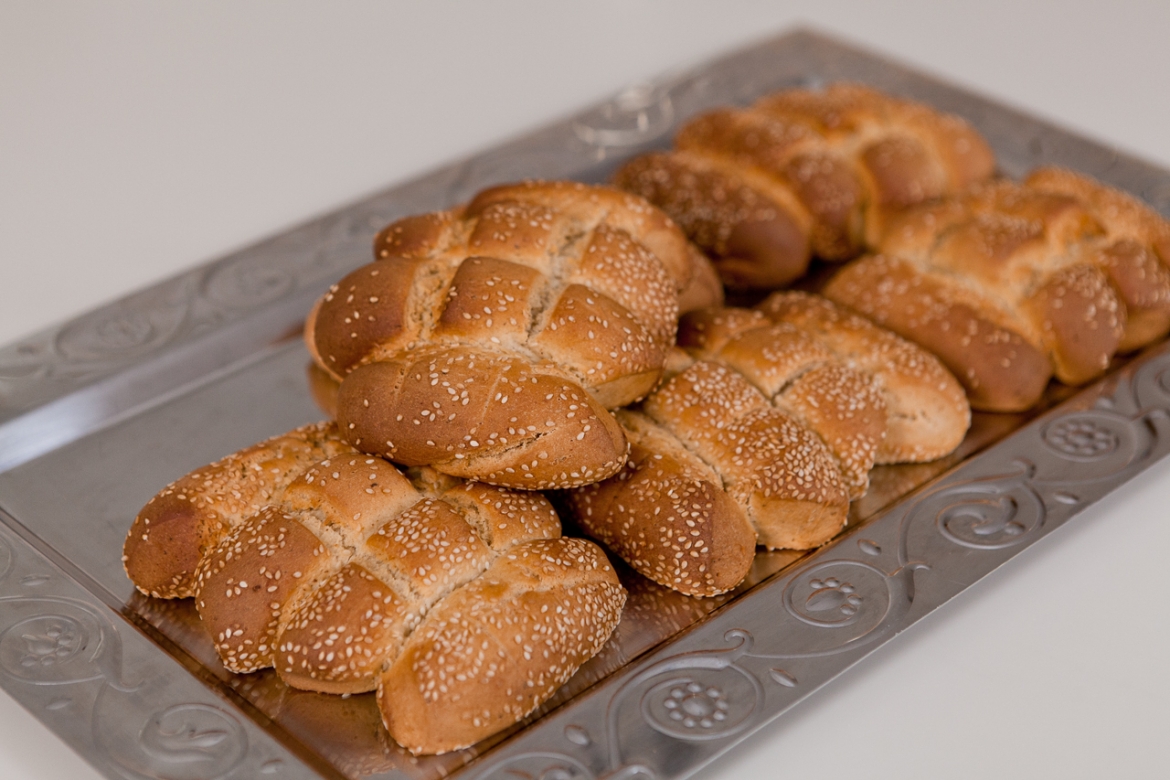
Ingredients
Flour (village) – 1 kg
Milk – 350 ml
Fresh anari cheese (unsalted) – 300 gr
Butter (or clarified butter) – 50 gr
Dry yeast – 1 sashet
Water – 100 gr
Sugar – 100 gr
Salt – 1 teaspoon
Lemon juice (freshly squeezed) – 1 teaspoon
Herbs and spices: cinnamon – 2 sticks, mahleb* – ¼ teaspoon, sesame – 100 gm, mastikha** – ¼ teaspoon, anise – 1 teaspoon, clover – 6 pieces
Cooking method
To prepare the sesame seeds: boil them in water that contains lemon juice for 3 minutes. Dry them thoroughly.

Melt butter over medium heat.
Grind all the spices and add 1 tea spoon of sugar.
Mix the dry yeast with water and add 1 tea spoon of sugar.
Mix all of the ingredients (ground up spices, flour, salt and melted butter) in a bowl.
Heat up the milk and sugar (without bringing it to a boil!) is a pot. Remove from heat and add anari cheese (which you need to first mince using a potato masher). Add the yeast and mix well.
Add the flour (with spices and butter) and mix well using a food processor. Spend about 10 minutes mixing everything.
If you don’t have a food processor, you can use your hands — in which case you’ll need to spend about 20 minutes on the dough. A bread machine would also come in handy, fi you bake using the «dough» setting.
Once you are done kneading the dough it shouldn't stick to your hands. Divide it into six pieces, which you’ll need to shape into six rolls. Cover them in sesame, connect the two ends, make slight incisions at the curves and make grid-like marks on the top.
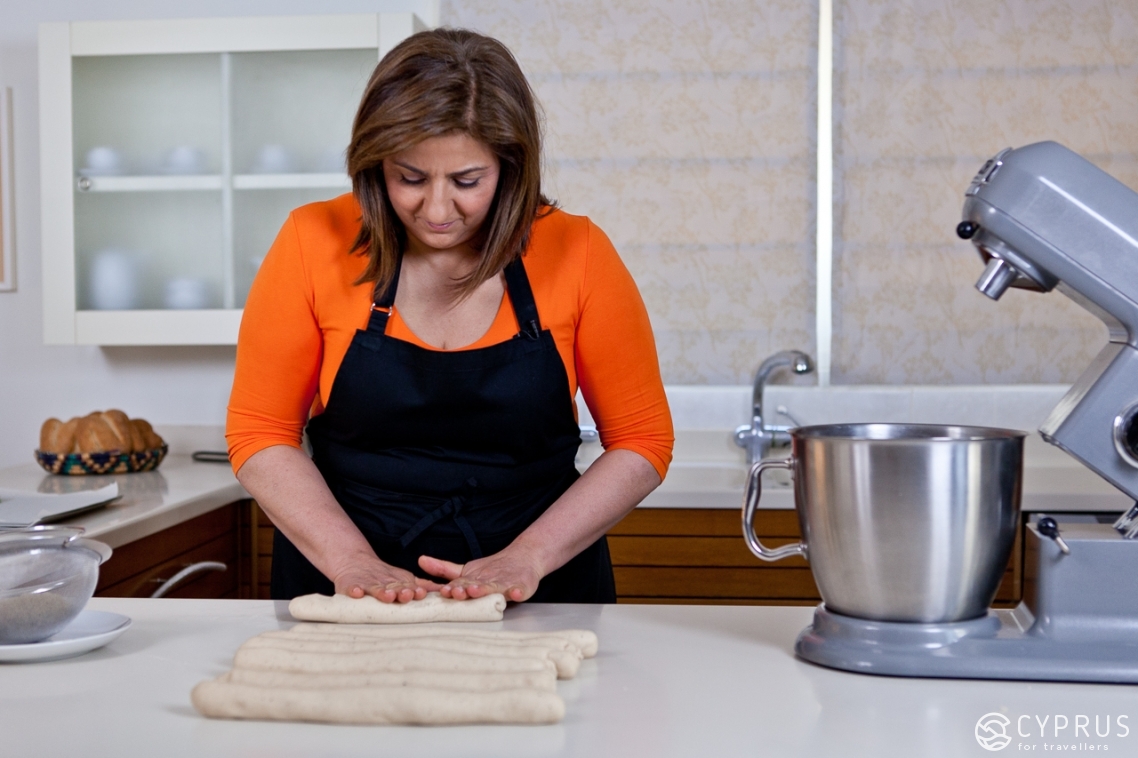
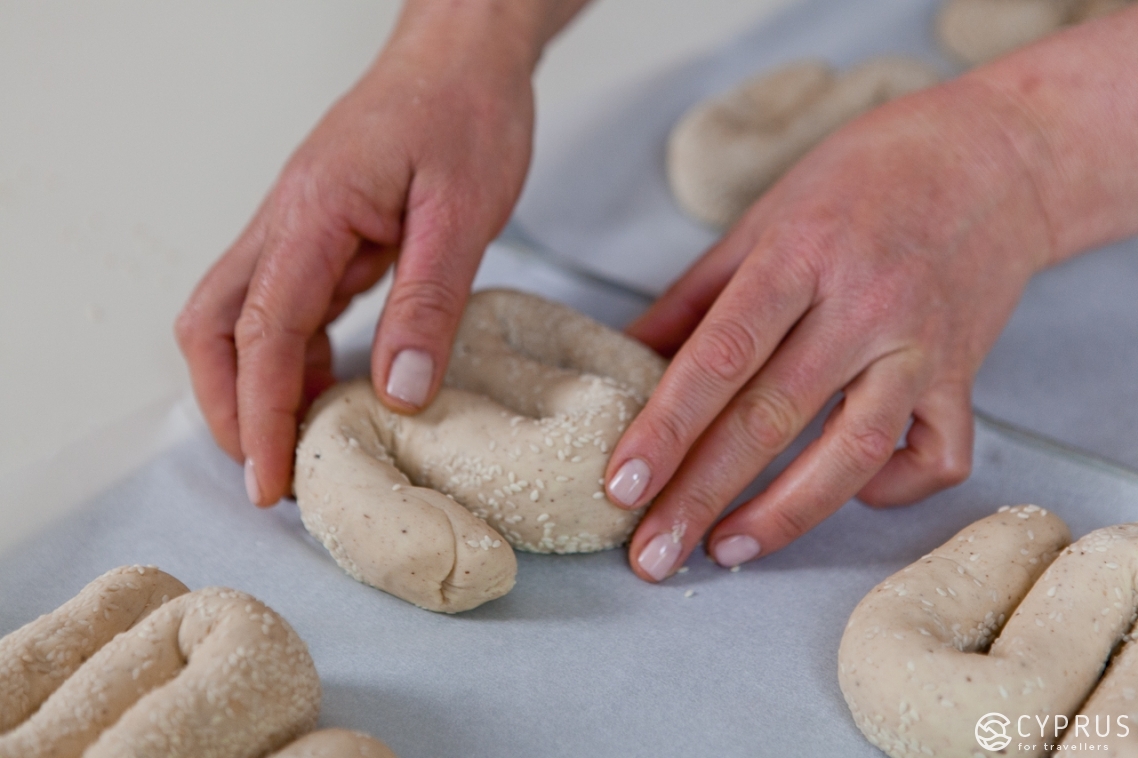

Put the bread on a baking sheet, cover with a towel and let sit for an hour.
Bake at 150 - 180 °C for 45 minutes, or until a golden crust.
Serve hot or cool.
Footnote:
* Mahleb — aromatic spice produced from wild cherry seeds. The taste is reminiscent of bitter almond and cherry. The spice is used in the preparation of sweets in order to highlight their taste.
** Mastikha — is a food additive and a natural flavoring agent derived from Pistacia Lentiscus's tar. It is used in cooking as well as to make «Elma» gum, whose anti-bacterial properties are said to be very good for your gums and even intestinal health.
Recipe by Marilena Joannides.
Your karpasitika koulouri is ready and you are all set for the holiday!
Happy Easter: Kalo Pasxa kai Kali Anastasi!
Written by Evgeniya Kondakova-Theodorou.





